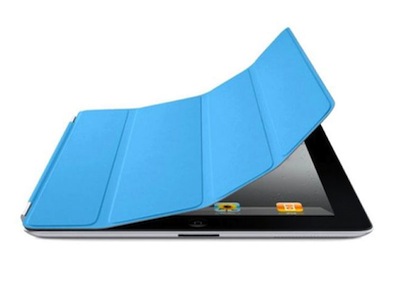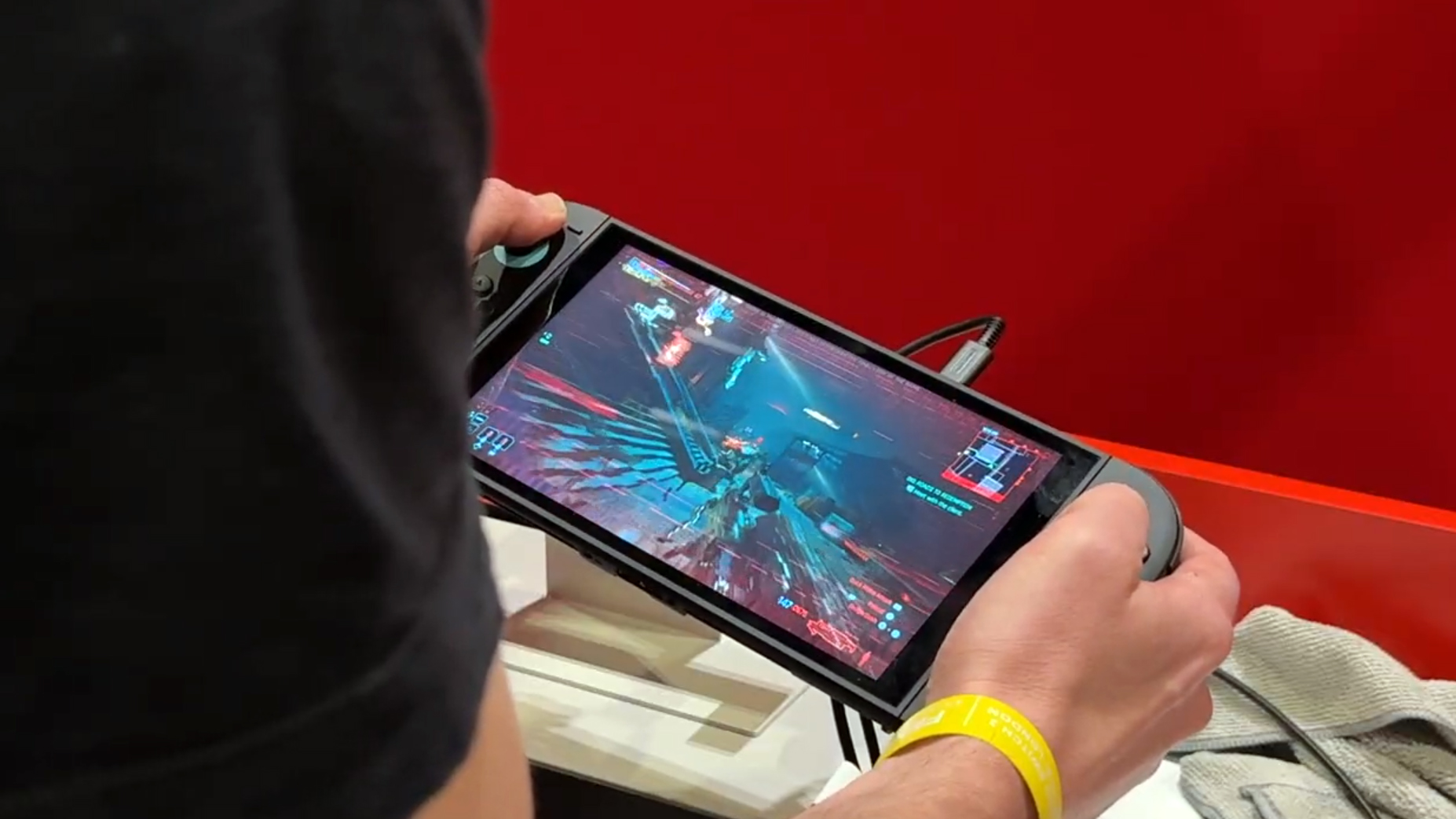Using a Tablet Can be a Pain in the Neck, Literally
The Harvard School of Public Health has found tablets could cause users head and neck pain.

Tablets are supposed to fill the gap between smartphone and laptop. They're regularly touted as ultra-portable solutions for those that like to travel or surf the web while watching TV or laying in bed. But are these devices really doing us any favors by facilitating the opportunity for such casual browsing? According to a study done by The Harvard School of Public Health, the way we use these new and increasingly popular devices could end up causing neck pain.
The study, led by Jack Dennerlein, Senior Lecturer on Ergonomics and Safety at Harvard, tested a group of 15 experience tablet users. The test subjects were brought into the lab to complete a set of simulated tasks on an Apple iPad 2 and a Motorola Xoom, both of which were coupled with their proprietary cases. During the experiment, users were recorded using the tablets in four different positions: Lap-Hand, which saw the tablet held on the lap and the volunteer use one hand to operate the device; Lap-Case, which saw the tablet placed inside its case and positioned on the lap, set at the lower angle setting; Tablet-Case, which involved setting the tablet on the table in its case at its lower angle setting; and Table-Movie, which saw the tablet (again, in case) placed on the table at its higher angle setting. The lower angle setting for the iPad was 15 degrees while the Xoom's lower angle setting was recorded as 45 degrees. The higher angle settings were recorded as 73 degrees for the iPad and 63 degrees for the Xoom.
The test subjects were monitored and recorded while using the device in each of these settings. Activities carried out included browsing the Internet, responding to email, playing games, and watching a movie. While doing this, their head and neck posture and gaze angle were measured using an infrared three-dimensional motion analysis system. The study found that users positioned their head and neck in the most neutral position while in Table-Movie mode. However, in general, the researchers found that study participants' heads and necks were in more flexed positions while using the tablets than those typical of desktop or notebook computer users.
For this reason, Dennerlein recommends that tablet users vary their postures, switching things up every 15 minutes or so. Users are also advised to use a case that doubles as a stand, allowing you to prop the device up and reduce the risk of neck pain.
Follow @JaneMcEntegart on Twitter for the latest news.
Sign up to get the BEST of Tom's Guide direct to your inbox.
Get instant access to breaking news, the hottest reviews, great deals and helpful tips.
Jane McEntegart works in marketing communications at Intel and was previously Manager of Content Marketing at ASUS North America. Before that, she worked for more than seven years at Tom's Guide and Tom's Hardware, holding such roles as Contributing Editor and Senior News Editor and writing about everything from smartphones to tablets and games consoles.
-
jacobdrj So can books: It is why my preferred method of reading is always the computer/laptop. Tablets are too heavy, and books are even heavier, and more flimsy, so I am constantly readjusting the pages. And the worst part, at least with e-ink tablets, is that like books, there is no back-light... I have no use for tablets, or books...Reply
Viva la laptop! -
shanky887614 backlights are what gives you eyestrain.Reply
you can hold a book comfortably in front of face
maybe you should try it instead of leaning over a book following finger on page -
jacobdrj shanky887614backlights are what gives you eyestrain.you can hold a book comfortably in front of face maybe you should try it instead of leaning over a book following finger on pageEyestrain is a myth.Reply
Not a 1000 textbook.
You try holding a 1000 page textbook with 1 hand so that 1) the light is right and 2) you finger is on the page...
Unless you are a professional weight lifter, I doubt you can do it for more than 10 minutes... -
shanky887614 no one uses text books these days except for reference and thenReply
you are oviously a child and dont know much about the real world
http://en.wikipedia.org/wiki/Asthenopia
they rarely make books with that many pages in, e-readers dont have backlights because the glare from the back light can cause eyestrain
if you dont belive me, put your computer screen on max brightness and see how long you last -
mrmaia Tablet users spend most of their time on Facebook... there's not much in their heads to weight anyways.Reply -
13thmonkey its not the backlight per-se but the difference in illumination between what you are looking at and the surroundings, an e-ink device is at the same illumination level as its surroundings. A laptop is normally a lot brighter, regardless of setting.Reply -
jacobdrj Some of us use textbooks for those they have not yet been digitized. We will get to all eBooks eventually, but we are not there yet.Reply
Let me clarify about eyestrain: Anything can give you eyestrain. Eyestrain that is somehow attributed MORE to back lights as opposed to other medium, such as, for example, a simple non-backlit book, is a myth. You ALWAYS need to take breaks from making single focus situations. Just because there is a backlight does not mean it is somehow worse for you than a standard book. If you are experiencing more eyestrain, increase your font size and increase your ambient lighting...
I have heard that myth about eyestrain from people for years. It may have been true back in the days of the CRT, but I have talked with my doctor about it: It is a false attribution to back lighting. It is attributed to staring at the same focal length continuously...
And insulting people by calling them children is quite little of you. I did not insult you. I disagree with your premise. You can choose to engage or not. -
house70 jacobdrjEyestrain is a myth. Not a 1000 textbook.You try holding a 1000 page textbook with 1 hand so that 1) the light is right and 2) you finger is on the page...Unless you are a professional weight lifter, I doubt you can do it for more than 10 minutes...Eyestrain may be a myth (for you, not so for others that actually experience it), but discomfort caused by backlighting is not; it is a fact that staring at a screen that has a higher brightness than the surroundings can fatigue the eyes much faster. A book/e-ink screen use the surrounding light, therefore they are much easier to use on the long run.Reply
For a quick online check, bright LCDs are fine, for hour(s)-long reading... not so. -
house70 And, in the end, it is a matter of personal preference. If one is OK with the bright LCD use, then go for it. Just don't expect everyone to have the same opinion.Reply
Even that suggestion to increase ambient lighting reflects the truth: brighter-than-surroundings screens WILL cause discomfort and increase the eyestrain, hence you are trying to compensate for that by turning your lights on. That, in turn, forces your eye to remain in myosis for a long time. -
marraco In other words, companies who allow his employees to use tablets, should pay higher insurance rates.Reply
